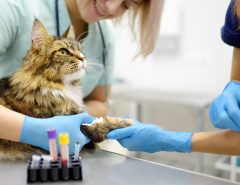A visit to an emergency veterinary clinic can be a daunting endeavor for any pet owner, awash with a mix of anxiety and urgency. These specialized facilities are designed to provide rapid and effective medical intervention in critical situations, offering a sanctuary of hope and healing for your beloved companion. When faced with an unexpected health crisis, understanding what to expect during such a visit can significantly alleviate stress and ensure you are better prepared to support your pet through this challenging time.
Visiting an emergency veterinary clinic can be stressful, but knowing what to expect can help you navigate the situation more effectively. Here’s a breakdown of what typically happens during a visit to an emergency veterinary clinic:
1. Triage Assessment
Upon arrival in an emergency vet facility, your pet will undergo a triage assessment to determine the severity of their condition. Pets with life-threatening emergencies, such as difficulty breathing, severe trauma, or uncontrollable bleeding, will be prioritized for immediate care. Triage helps ensure that the most critical cases receive prompt attention.
2. Registration and Paperwork
You will need to provide information about your pet, including their medical history, current medications, and any recent changes in health. If your pet has insurance, bring relevant documents. Registering helps clinic staff prepare for your pet’s evaluation and treatment.
3. Examination by a Veterinarian
A veterinarian or veterinary technician will conduct a thorough physical examination of your pet. They will assess vital signs such as heart rate, respiratory rate, and temperature and evaluate any visible injuries or symptoms. The initial examination helps determine the next steps in diagnostics and treatment.
4. Diagnostic Tests
Depending on your pet’s condition, the veterinarian may recommend diagnostic tests to gather more information. Standard tests include blood work, X-rays, ultrasound, or other imaging techniques. These tests help identify underlying issues, assess the extent of injuries or illnesses, and guide treatment decisions.
5. Treatment Plan Discussion
After evaluating your younger pet and reviewing diagnostic results, the Punta Gorda kitten vet will discuss a treatment plan with you. This plan may include medications, fluid therapy, wound care, surgery, or other interventions tailored to your pet’s needs. The veterinarian will explain the recommended treatments, expected outcomes, and potential risks.
6. Financial Estimates and Consent
The clinic will provide an estimate of the costs for the recommended treatments. Emergency care can be costly, so discussing financial considerations upfront is essential. You may need to consent to treatments before administering them, especially for anesthesia or surgery procedures.
7. Monitoring and Care
Once treatment begins, your pet will be monitored closely by veterinary staff. They will observe vital signs, assess responses to treatment, and provide ongoing care as needed. Some pets may require hospitalization for intensive monitoring and supportive care until they stabilize.
8. Communication and Updates
Throughout your pet’s stay at the emergency clinic, the veterinary team will keep you informed about their progress. They will update you on your pet’s condition changes, treatment response, and care plan adjustments. Feel free to ask questions or seek clarification about your pet’s care.
9. Discharge Instructions
When your pet is stable and ready to go home, the veterinarian will provide discharge instructions. These may include medications to administer at home, wound care guidelines, activity restrictions, and follow-up care recommendations. Understanding and following these instructions are crucial for your pet’s recovery.
10. Follow-Up Care
Depending on the nature of your pet’s emergency, they may require follow-up visits with your regular veterinarian for ongoing treatment or monitoring. For example, schedule a cat check up at Animal Hospital at Babcock to ensure your pet continues healing correctly and address any lingering concerns or complications. Follow-up care is crucial for your pet’s recovery and overall health.
Final Thoughts
While inherently stressful, an emergency veterinary clinic visit is structured to deliver prompt and effective care to pets in urgent need. You can approach the situation with greater clarity and preparedness by acquainting yourself with the expected procedures—from the initial triage assessment and diagnostic processes to treatment plans and follow-up care. This knowledge empowers you to actively participate in your pet’s emergency care, facilitating smoother communication with veterinary professionals and ultimately fostering better outcomes.




